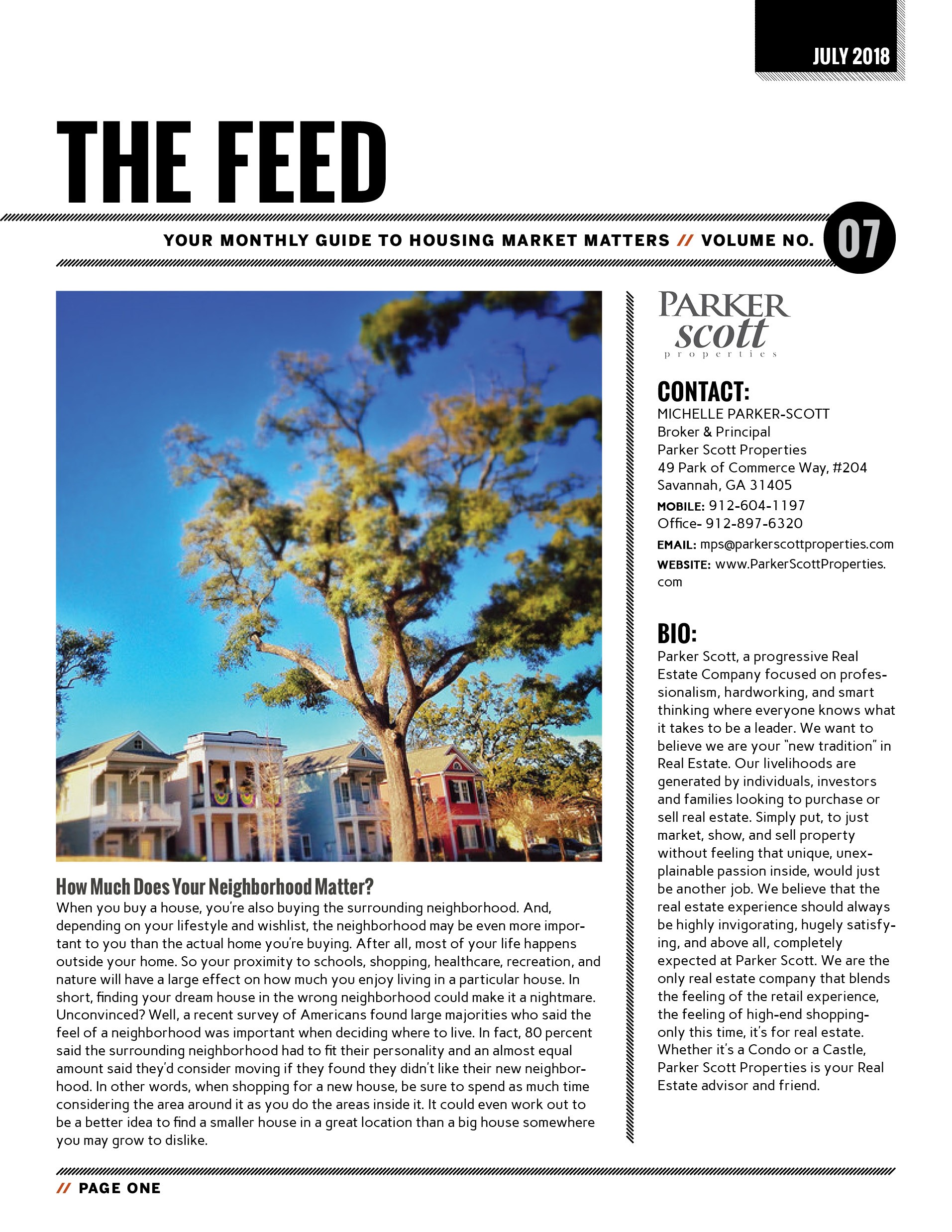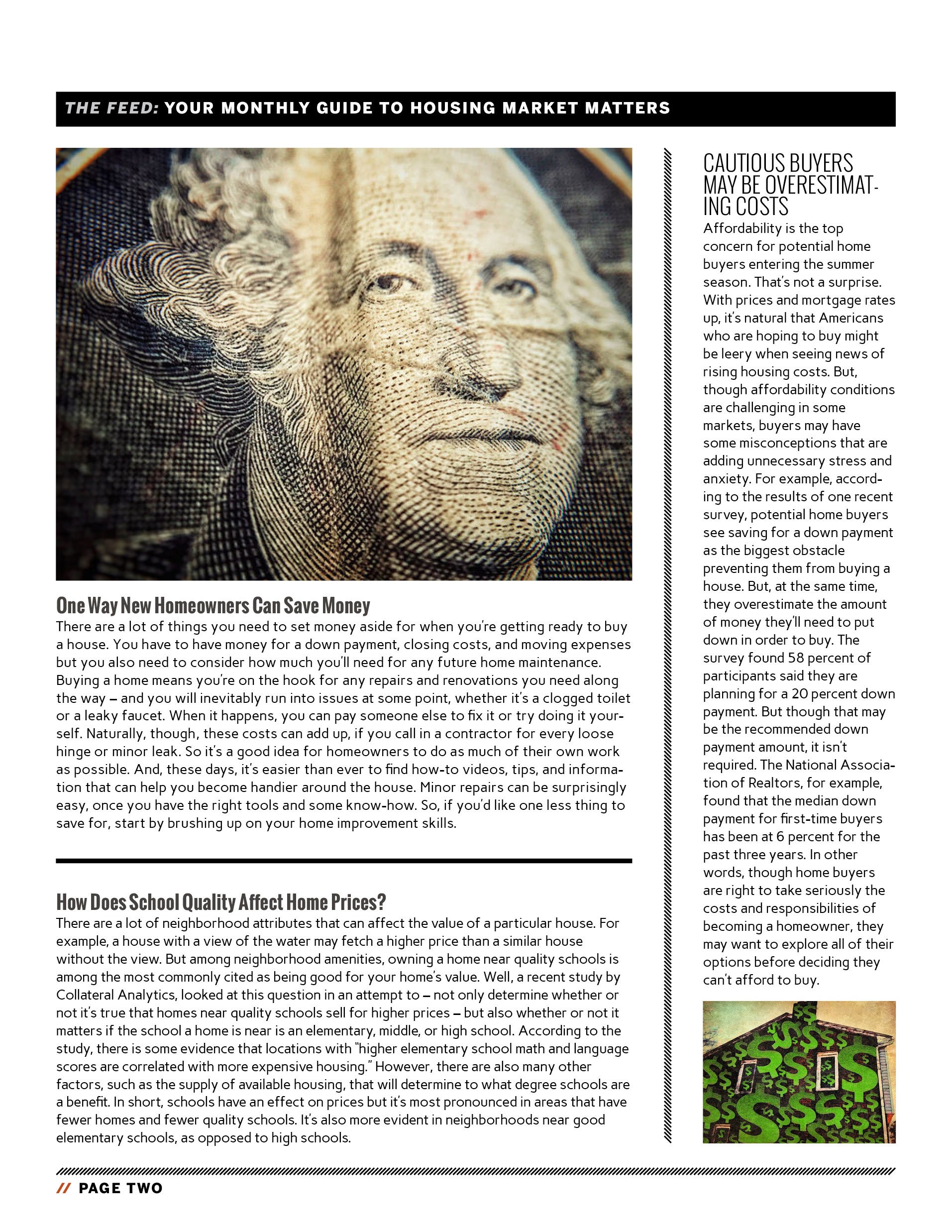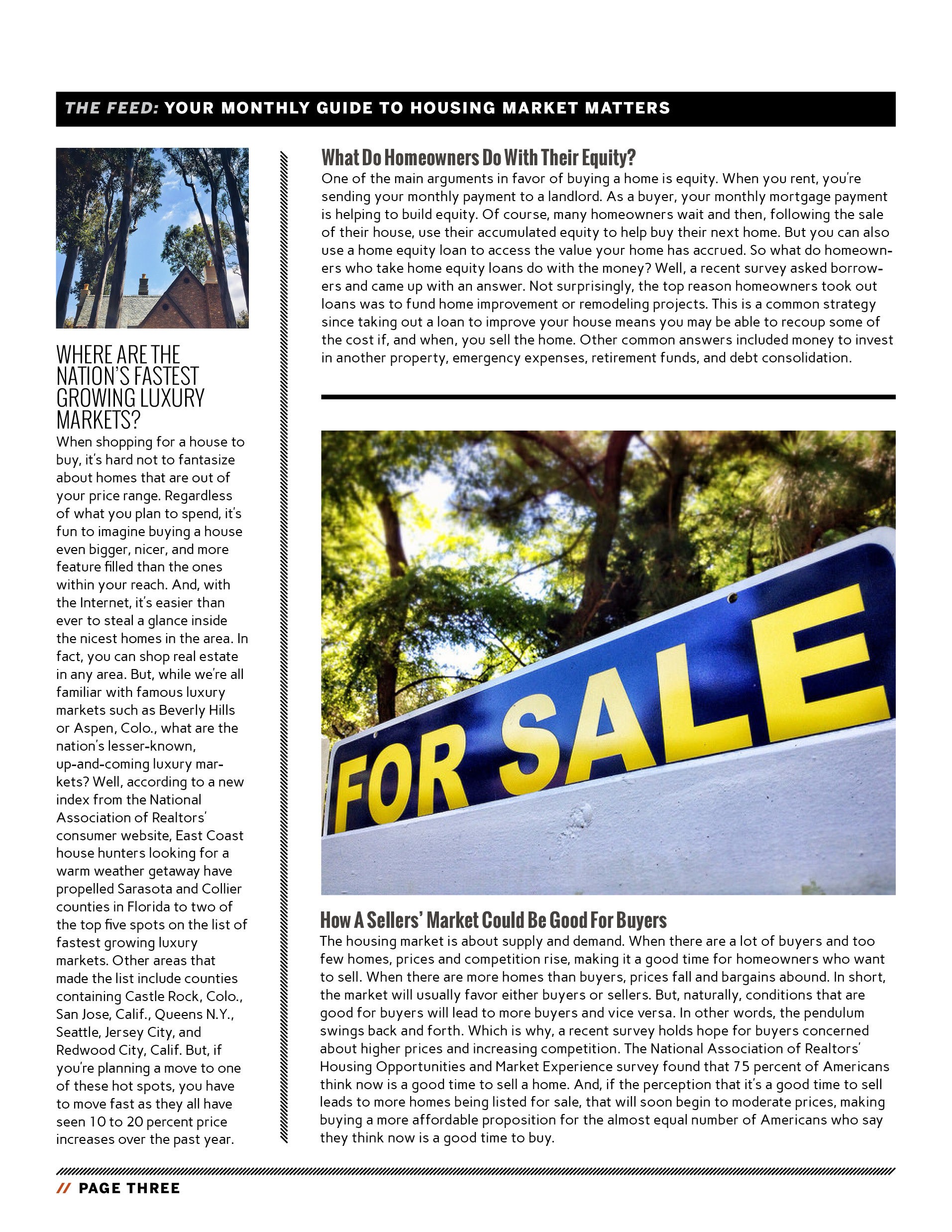


July Newsletter






Home prices have been climbing for the past few years. And while that has presented affordability challenges for buyers in some markets, it’s also produced big gains for homeowners who’ve sold a home recently. Take, for example, new estimates showing that, nationally, the typical home seller, after living somewhere for eight years, made nearly $40,000 on their home sale. That’s good news for homeowners. And, in some markets, the sales gain is even higher. Homeowners in the Dallas-Fort Worth area saw a median sales gain of $56,297 after just 7.4 years and, in San Jose, sellers’ median price gain was nearly $300,000. But while that may be encouraging for anyone who hopes to sell soon, there is a flip side. Because many home sellers hope to use any money they make on their home sale as a down payment for their next home, the amount gained on a sale may not seem as significant, especially if you’re buying a home in the same market and price range. More here.
The National Association Of Realtors’ most recent Pending Home Sales Index shows that the hot summer housing market has not deterred hopeful home buyers from looking for a house to buy. But though there is a high level of demand from buyers, supply issues continue to hold back sales numbers. In fact, the index found that the number of contracts to buy homes signed in May was essentially flat from the month before. Lawrence Yun, NAR’s chief economist, says sales are being hurt by low inventory but recent news that new home construction hit a 10-year high should be encouraging to prospective buyers. “Several would-be buyers this spring were kept out of the market because of supply and affordability constraints,” Yun said. “The healthy economy and job market should keep many of them actively looking to buy, and any rise in inventory would certainly help them find a home.” Regionally, results were mixed, with the Midwest, Northeast, and West all seeing modest increases, while the South saw a 3.5 percent drop. Pending home sales numbers are an important indicator, as they cover contract signings and not closings, which means they often foreshadow upcoming sales data. More here.
When debating whether to rent or buy your next place, the argument in favor of renting usually includes the fact that it’ll be cheaper – especially since you don’t have to pay for closing costs or save for a down payment. However, renting a place isn’t all that cheap these days and, depending on what you’re looking for, prices may be rising even faster than expected. According to recently released data, rental rates are increasing and particularly among two and three-bedroom homes. In fact, rental homes, generally, are climbing in price faster than apartments. Nationally, a typical two-bedroom now costs $1,310 per month and the cost for a typical three-bedroom is up to $1,445. And, depending on your local market, it could be even higher. So why is rent rising faster for homes than it is for apartments? Well, for some of the same reasons home prices are climbing. For one, new, and smaller, apartments are the focus of most rental unit construction, while the supply of single-family homes to rent is mostly fixed. More here.
The housing market is about supply and demand. When there are a lot of buyers and too few homes, prices and competition rise, making it a good time for homeowners who want to sell. When there are more homes than buyers, prices fall and bargains abound. In short, the market will usually favor either buyers or sellers. But, naturally, conditions that are good for buyers will lead to more buyers and vice versa. In other words, the pendulum swings back and forth. Which is why, a recent survey holds hope for buyers concerned about higher prices and increasing competition. The National Association of Realtors’ Housing Opportunities and Market Experience survey found that 75 percent of Americans think now is a good time to sell a home. And, if the perception that it’s a good time to sell leads to more homes being listed for sale, that will soon begin to moderate prices, making buying a more affordable proposition for the almost equal number of Americans who say they think now is a good time to buy. More here.

